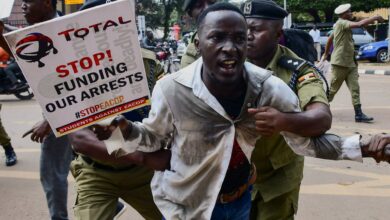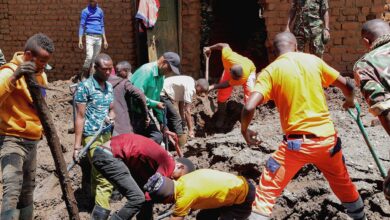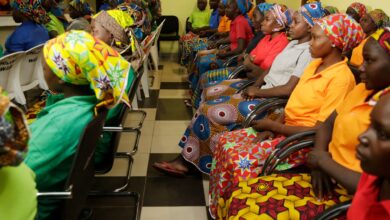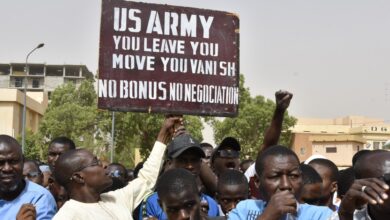What Ethiopia and Tigray need for peace talks to succeed

On August 24, 2022, the wheels fell off an uneasy nine-month truce between the Ethiopian and Tigrayan governments, with an enormous military assault across dozens of fronts in Tigray.
The informal cessation of hostilities had been reached following the withdrawal of Tigrayan forces from the neighbouring Afar and Amhara regions in December 2021. In the ensuing period, both parties called for mediation to end the war, as the humanitarian situation in northern Ethiopia deteriorated.
Mediation efforts by the United States to revive the ceasefire in early September failed. The deadly war on Tigray – which has killed more than half a million people, left more than 5.6 million Tigrayans starving and displaced another two million – has flared up again. In some ways, the signs have been ominous for a while: The government in Addis Ababa had, at the start of August, refused to lift the siege on Tigray and had criticised a joint visit by envoys of the United Nations, US, and European Union to the region’s capital Mekelle.
Still, a new window of opportunity for peace has emerged — if the parties to the conflict and bodies like the UN, which is currently meeting in New York, can utilise it urgently.
On September 11, 2022 – the Ethiopian New Year – the government of Tigray expressed its readiness to resume negotiations brokered by the African Union, effectively putting the ball in Prime Minister Abiy Ahmed’s court. Now, proactive mediation is needed to stop the entire region from being sucked into a greater abyss, save tens of thousands of lives and alleviate the suffering of millions.
Negotiations between the governments of Ethiopia and Tigray will determine the future of both the region and the country. In the Horn of Africa, 66 million people are already affected by drought. The stakes for the international community are very high. What then can be done to revive the truce and build a permanent ceasefire? What needs to be done to ensure successful mediation?
Understanding military realities
On one side of the war are Ethiopian, Amhara and Eritrean forces marshalling the resources of a population of more than 120 million with two sovereign states and their foreign allies providing military-grade drones. On the other side are the Tigray Defense Forces (TDF) representing the popular resistance of the fewer than eight million people of Tigray. Their war of attrition will reach the two-year mark on November 4, 2022.
The success of mediation efforts heavily depends on the military realities on the ground, the political will of the warring parties and the determination of the international community to end the war – as demonstrated by the diplomatic, financial, and other resources it deploys.
Furthermore, the success of mediation also depends on the mediators and their strategies. That in turn will determine the process, structure and agenda for talks, how different issues at stake are prioritised and other key ingredients for negotiations. In this instance, the AU, as the lead mediator in consultation with other envoys, has yet to develop a clear strategy. That could be dangerous because discredited mediation leaves conflicts even more convoluted than before and reduces trust in the utility of such efforts.
Impartial mediator needed
Following the reservations expressed by Tigray over the current African Union (AU) envoy, former Nigerian President Olusegun Obasanjo, it is imperative that the organisation appoint other mediators acceptable to both parties.
Impartiality is the cornerstone of proactive mediation. Former Kenyan President Uhuru Kenyatta, who has been engaging both parties, was appointed by his successor, William Ruto, to serve as his country’s envoy for Ethiopia and the Great Lakes. The US, EU and others have endorsed Kenyatta’s appointment. The AU should consider swiftly appointing Kenyatta as its envoy to Ethiopia too, while Obasanjo remains the envoy for the Horn.
Crucial next steps
To achieve military disengagement, it is critical to cease hostilities. This will allow a return to peaceful negotiations towards a ceasefire and transitional security arrangement. Unlike a mere truce, a ceasefire requires an overall agreement on the political agenda for the items of peace negotiations.
That agenda must include confidence-building measures, including unimpeded access to humanitarian aid and the immediate resumption of civilian transportation, electricity, telecommunications, banking services, salary payments, fuel deliveries and other items critical to survival for millions in Tigray. These are prerequisites for negotiations. Another confidence-building measure would be the release of prisoners of war and political prisoners, including Tigrayan members of the Ethiopian army and security sector.
To commence the process and prepare the ground for substantive and intricate politico-military negotiations, a Declaration of Principles – laying out parameters for the talks – should be made to guide the mediation process.
None of this will be easy. There are several thorny issues involved. They include demands from Tigray for the withdrawal of all non-TDF forces from all territories of the region, in effect returning to pre-war military positions. Ethiopia needs to recognise the TDF as the sole provider of security for Tigray and respect the will of the region’s people, including their right to hold a referendum within an agreed-upon time frame. Finally, there needs to be legal accountability before an international tribunal for atrocities established by the recent report of the International Commission of Human Rights Experts (ICHRE) on Ethiopia.
International community involvement
Finding agreement on these issues and bridging differences in a way that is anchored in respect for human rights will require unified international support for the mediation.
Effective mediation, in turn, needs robust and coercive compliance mechanisms and enforcement measures against violators, including provisions for sanctions on selected individuals, regional travel bans, freezing of assets and exclusion from political office in future governance arrangements.
The war on Tigray resumed partly due to the failure of the pan-African and international community to take concrete measures to end Ethiopia’s siege of the region. The Ukraine war has deflected the international community’s resources, leadership and attention away from the catastrophic war in Ethiopia — and laid bare some glaring double standards.
After all, in terms of magnitude and the humanitarian consequences, the conflict in Ukraine — while horrific — pales in comparison to the ongoing battles of attrition in Tigray, which have already claimed more than 500,000 lives.
The UN Security Council and the UN General Assembly must urgently discuss the situation in Ethiopia and deliberate on the report of the International Commission of Human Rights Experts on Ethiopia, submitted to the Human Rights Council in Geneva this week.
Just a tiny fraction of what the Western world has so far spent in support of Ukraine’s resistance against Russia’s invasion could have stopped the war in the Horn of Africa, ending the suffering of hundreds of millions.
For peace to truly take hold in the region, the world needs to wake up. Now.
The views expressed in this article are the author’s own and do not necessarily reflect Al Jazeera’s editorial stance.
Read the full article here








